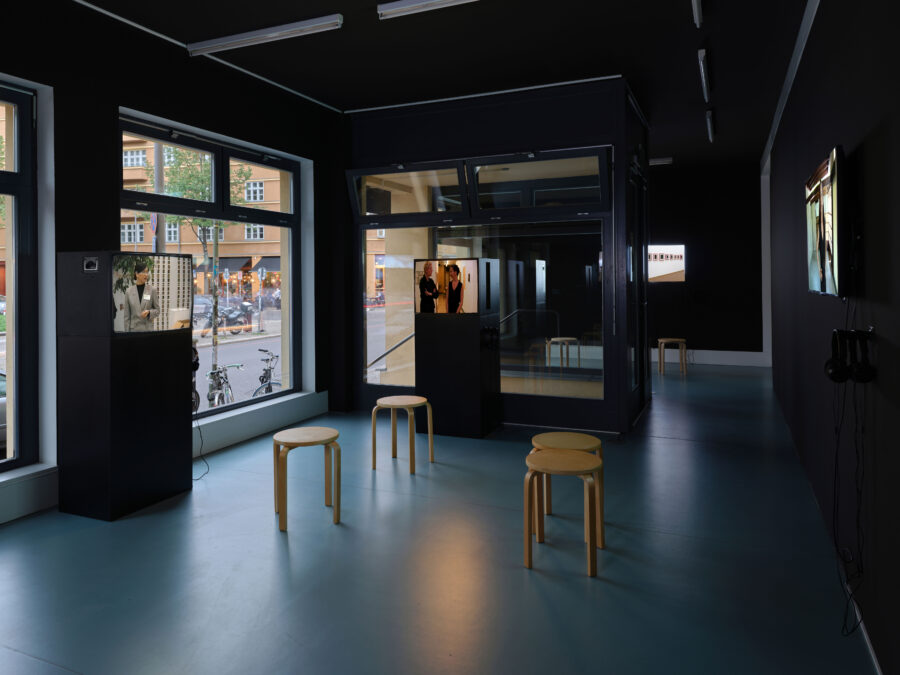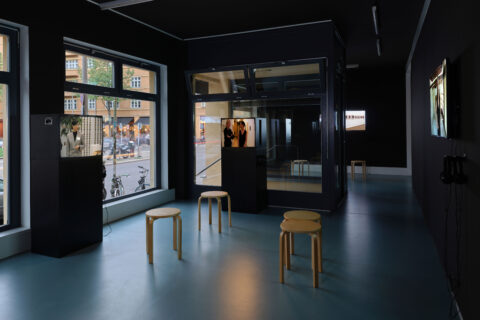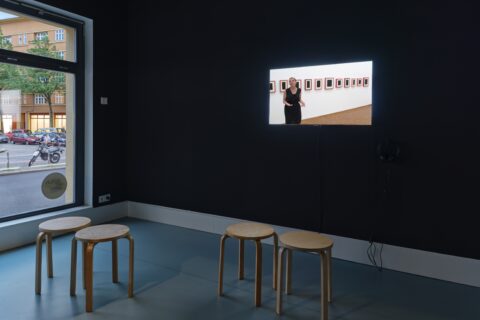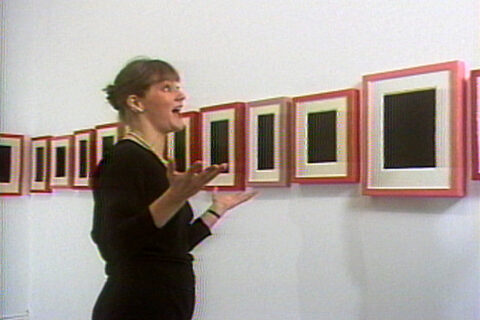Andrea Fraser Andrea Fraser
12/09/2025 – 29/11/2025
Opening / Eröffnung:
Donnerstag, 11. September 2025, 18 – 22 Uhr
Thursday, September 11, 2025, 6 – 10pm
Öffnungszeiten / Opening hours:
Dienstag - Freitag 11 – 18 Uhr, Samstag 12 – 18 Uhr
Tuesday - Friday 11am – 6pm, Saturday 12 – 6pm
Besondere Öffnungszeiten während der Berlin Art Week /
Special Opening hours during Berlin Art Week:
Freitag – Sonntag, 12. – 14. September 2025, 12 – 18 Uhr /
Friday – Sunday, September 12 – 14, 2025, 12 – 6pm
Press Release
Andrea Fraser (b. 1965, Billings, Montana) currently lives and works in Los Angeles, California. Widely regarded as one of the most influential and provocative artists of her generation, Fraser has been a central figure in institutional critique since the mid-1980s. Her groundbreaking work examines the social, financial, and emotional economies that structure cultural organizations
and interactions—probing the motivations of artists, collectors, patrons, gallerists, and audiences. Working across performance, video, text, and sculpture, she blends site-specific and research-based conceptual strategies with feminist inquiries into subjectivity, desire, and power. Fraser’s work is as analytically incisive as it is emotionally charged, often infused with humor and pathos. Pierre Bourdieu once described her practice as “a sort of machine infernale whose operation causes the hidden truth of social reality to reveal itself.”
Untitled (Objects) presents five life-sized sculptures of 2-year old children in poses suggesting they are at rest upon their five crib-size pedestals. Modeled in microcrystalline wax over metal armatures, Fraser developed a process of layering white wax over brown wax, which gives their surface a marble-like finish. However, unlike marble, or the bronze sculptures normally cast from modeled wax, the Untitled (Objects) remain soft and pliable, suspended in a process that will never be completed. While the figuration may evoke familial contact, their fragile surfaces require protective vitrines, rendering them untouchable.
Conceived in connection with her 2003 work Untitled, which performs the metaphor of selling art as prostitution, Untitled (Objects) materialize the metaphor of artworks as offspring. With these sculptures, the first artworks she has crafted by hand in 25 years, Fraser extends her examination of the intersection between financial and emotional economies in art, exploring “the desire to make things that are wanted, valued, and cared for in ways that only artworks are wanted, valued, and cared for.” While the sculptures may be interpreted as the products of the sexual encounter documented in Untitled, Fraser has written that “they may be figures less of creative offspring than of the artist, stripped of conceptual and critical defenses against an archaic want to be valued and cared for in perpetuity.” Fraser has described Untitled (Objects) as allegorical figures of art object, which aim to surface the emotional underpinnings of the relations in which artworks exist.
Also included in the exhibition are two components of Fraser’s Untitled project, which involved the exchange between Fraser and an art collector who pre-purchased the first of a limited-edition video in which he has sex with the artist. Untitled (Audio) (2003/2004), an emotionally saturated 10-minute ambient soundscape edited from the sound captured by the camera during the recording of Untitled, but erased from the editioned video. Densely edited to including only sounds made by the artist, with sounds made by the participating collector edited out, Untitled becomes an encounter with an absent object, a void to be filled by the listener, who is situated implicitly in the position of the collector as the object of the artist’s attention. Untitled (Documentation) (2003/2006), presents the project within its historical and conceptual framework, including the original press release and installation view at the gallery which brokered the exchange. Untitled has been interpreted widely as enacting the centuries-old analogy of selling art as prostitution. However, important to Fraser is that the collector paid for the video, not for the sex. With this, the work highlights the role of art commodities in mediating relations of exchange. At the same time, Untitled performs the intimate entanglement of personal and market valuation, desire and financial exchange, that drives the participation of both artists and collectors in the art market.
At Nagel Draxler Kabinett, we present six recording of May I Help You?, one of Fraser’s groundbreaking early performances in the field of institutional critique, including two new versions presented publicly for the first time. It’s a beautiful piece (1991/2025) documents the first time Fraser performed the work herself in video edited by Fraser from recordings filmed by Stephan Dillemuth and Joseph Strau at Christian Nagel’s booth at Art Cologne in 1991. It’s a beautiful collection, isn’t it? (1991/2024/2025) documents Fraser’s performance of May I Help You? at the Fondazione Antonio Dalle Nogare Foundation in Bolzano in 2024 for the Transart performance festival and in conjunction with her survey exhibition, “I just don’t like eggs!” Andrea Fraser on collectors, collecting, collections.
First written and performed in 1991 and revised for subsequent performances, May I Help You? presents six different positions in relationship to culture, each representing a different social class: from a visual arts connoisseur to a person who feels excluded by the system of museums and galleries. Through these differing and conflicting perspectives, the work highlights the function of art and cultural consumption to express and legitimize social hierarchies of class and status. In addition to the performance in Cologne and Bolzano, the exhibition includes video of the first presentation of May I Help You? at American Fine Arts, Co in New York in 1991, where it was performed by actors; ORCHARD Document: May I Help You? (1991/2005/2006), created in collaboration with Jeff Preiss; It’s a beautiful house, isnt’ it? (1991/2011), recorded at the MAK Center in Los Angeles; and Kann ich Ihnen helfen? (1991/2013), performed in German translation by actress Suzan Erentok at the Museum Ludwig Cologne.





